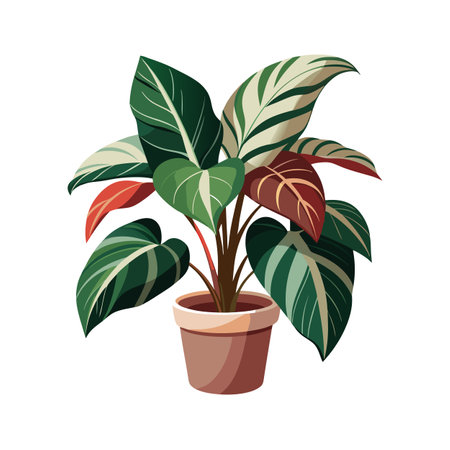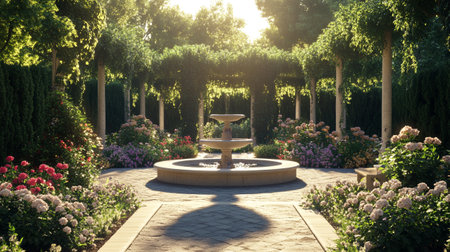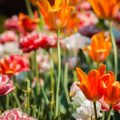Introduction to Modern Curb Appeal
In American neighborhoods, curb appeal is more than just a passing trend—its an essential part of homeownership and community pride. The moment someone drives by or walks up to your property, the exterior landscape sets the tone and leaves a lasting first impression. Modern curb appeal goes beyond manicured lawns and tidy walkways; its about weaving together sleek design elements with the unique beauty of native plants. By thoughtfully combining hardscaping—think bold paver paths, elegant retaining walls, or stylish patios—with flora that thrives locally, homeowners can create a visually stunning entrance that is both sustainable and welcoming. This harmonious blend not only elevates the aesthetic value of your home but also aligns with contemporary American preferences for low-maintenance landscapes that honor regional ecology. Embracing this approach transforms front yards into vibrant, living spaces that reflect individuality while strengthening neighborhood connections.
2. The Role of Hardscaping in Contemporary Landscapes
Hardscaping has become a defining feature in modern American front yard design, offering both practical benefits and sleek visual appeal. Incorporating elements like patios, walkways, and retaining walls transforms ordinary outdoor spaces into inviting, organized, and low-maintenance environments. These features not only provide structure but also establish clear lines and zones within the landscape—key to achieving that sought-after curb appeal.
Patios serve as functional gathering spots for family and friends, seamlessly blending indoor living with the outdoors. Walkways guide guests through the property while creating a sense of order and intentionality. Retaining walls address elevation changes and help prevent soil erosion, all while adding dimension and visual interest to flat or sloped yards.
| Hardscape Element | Main Function | Aesthetic Impact |
|---|---|---|
| Patio | Outdoor seating and entertaining area | Sleek surfaces; extends living space outdoors |
| Walkway | Defines pathways; directs foot traffic | Crisp lines; enhances entry experience |
| Retaining Wall | Manages slopes; prevents erosion | Adds depth; frames plantings elegantly |
The careful selection of materials—such as poured concrete, natural stone, or modern pavers—further elevates the look, allowing homeowners to echo their home’s architectural style or regional character. In contemporary landscapes, hardscaping isn’t just about utility; it’s about crafting a foundation that sets the stage for vibrant native plantings and creates a harmonious balance between built elements and nature.

3. Why Native Plants Matter
Native plants are the unsung heroes of modern curb appeal, especially when thoughtfully paired with hardscaping elements. These resilient beauties offer a trifecta of benefits that make them an obvious choice for American landscapes. First, they require minimal maintenance—no need for constant watering, fertilizing, or pampering. Once established, native plants thrive on their own, freeing up your weekends and reducing long-term costs.
Second, their natural drought tolerance means they flourish in local climates, even during hot American summers or periods of water restriction. This makes them a sustainable option for homeowners looking to conserve resources while still enjoying vibrant outdoor spaces.
Finally, native plants play a vital role in supporting local ecosystems. They provide food and habitat for pollinators like bees, butterflies, and birds, strengthening biodiversity right in your front yard. When integrated with modern hardscaping—think stone paths bordered by purple coneflowers or sleek concrete steps softened by swaying prairie grasses—you create a harmonious landscape that feels both sophisticated and deeply rooted in place.
Choosing native plants isn’t just about aesthetics; it’s a commitment to environmental stewardship and a celebration of the unique character of your region. By blending these low-maintenance wonders with contemporary hardscape designs, you elevate your curb appeal while making a positive impact on the world just outside your door.
4. Design Principles for Blending Hardscape and Native Flora
Achieving a harmonious and contemporary curb appeal relies on thoughtful integration of hardscape features with native plants. This balance enhances visual interest, supports local ecosystems, and creates a sense of place that resonates with American landscapes. Here are essential techniques for seamlessly uniting these elements:
Strategic Placement: Clusters, Borders, and Accents
To avoid a disjointed look, group native plants in naturalistic clusters around hardscaped elements such as patios, pathways, or retaining walls. Use border plantings to soften the edges of stone or concrete, creating inviting transitions between built and planted spaces. Accent plantings highlight focal points—like boulders or sculptural benches—bringing attention to both flora and structure.
Integration Techniques Table
| Technique | Description | Best For |
|---|---|---|
| Cluster Planting | Group natives in drifts or irregular shapes for a natural effect near patios or walkways. | Softening geometric hardscape lines |
| Border Planting | Create layered borders along driveways or fences with varying heights and textures. | Defining outdoor rooms, guiding movement |
| Accent Planting | Spotlight signature hardscape elements using bold native grasses or wildflowers. | Highlighting sculptures, entryways, water features |
Cohesive Color and Texture Palettes
Select native plants whose foliage, bloom colors, and forms complement your chosen hardscape materials. For example, pair silvery-blue prairie grasses with cool-toned pavers for a modern vibe or use warm-hued wildflowers alongside natural stone for organic continuity. Repeating key colors and textures throughout the landscape ties the design together beautifully.
Pro Tip:
Always echo architectural lines from your home in your hardscape layout—then layer native plantings to reinforce those shapes. This approach elevates curb appeal while keeping your landscape rooted in its local context.
5. Sustainable Choices for American Homes
For homeowners seeking modern curb appeal with a conscience, integrating sustainable solutions is essential. Eco-friendly hardscaping materials—such as permeable pavers, recycled concrete, or locally sourced stone—reduce environmental impact while offering durability and contemporary style. These choices not only minimize waste but also support regional industries, grounding your landscape in a sense of place.
Water-wise design is another cornerstone of sustainability. By selecting native plants that thrive in local climates, you can significantly reduce irrigation needs and maintenance costs. Incorporating drought-tolerant species like California poppies in the West, prairie grasses in the Midwest, or coneflowers in the Southeast ensures year-round beauty with less water and fewer chemical interventions.
Eco-Friendly Hardscape Materials
Sustainably harvested wood, gravel paths, and permeable surfaces promote healthy soil and efficient drainage—an important consideration in many American regions prone to heavy rains or droughts. These materials blend seamlessly with native plantings, creating a balanced and enduring landscape aesthetic.
Smart Irrigation Solutions
Modern smart irrigation systems—such as drip lines and weather-based controllers—further optimize water usage. Paired with mulching from natural sources, these techniques help conserve moisture, suppress weeds, and enhance soil health.
A Lasting Legacy
Making sustainable choices isn’t just about today’s curb appeal—it’s an investment in the future value and resilience of your home. By thoughtfully combining eco-friendly hardscaping and regionally appropriate planting, your landscape becomes a living showcase of American environmental stewardship and contemporary style.
6. Inspiring Curb Appeal Ideas and Case Studies
To truly embrace modern curb appeal, let’s explore how real American homes have beautifully combined hardscaping with native plant selections. These case studies and creative tips showcase not just stunning aesthetics, but also a deep respect for local environments and regional character.
Case Study: The Modern Prairie Retreat
In the heart of the Midwest, a family home sits surrounded by sweeping ornamental grasses and wildflowers, all native to the prairie. The design uses broad limestone pavers as a welcoming walkway, blending seamlessly with the golden hues of coneflowers and little bluestem. This project demonstrates how integrating large, geometric stepping stones with informal, flowing plant masses creates an approachable yet contemporary entrance that feels rooted in place.
Creative Tip:
Pair oversized concrete pavers with low-maintenance natives like black-eyed Susan or switchgrass to create textural contrast while ensuring sustainability.
Case Study: West Coast Zen Minimalism
On the Pacific coast, a coastal bungalow achieves a clean, modern look with gravel beds and sleek corten steel edging. Drought-tolerant natives such as California poppy and manzanita thrive among angular flagstone paths. The restrained hardscape forms allow the vibrant colors and unique structures of native plants to shine, reflecting both eco-consciousness and sophisticated design sensibility.
Creative Tip:
Use decomposed granite or river rock mulch to define outdoor “rooms,” while planting clusters of native succulents for year-round interest without excessive watering.
Case Study: New England Charm Reimagined
A historic colonial in Massachusetts reinvents tradition by combining classic brick borders with lush sweeps of native ferns and bee balm. Low stone walls frame the garden beds, echoing the architecture while providing structure. This balanced blend of hard materials and soft greenery honors American heritage with a fresh twist on curb appeal.
Creative Tip:
Add raised beds or retaining walls using locally sourced stone, then fill them with pollinator-friendly natives for a landscape that’s as inviting to wildlife as it is to neighbors.
Final Inspiration:
The most memorable curb appeal designs invite visitors in through thoughtful transitions—wide pathways softened by billowing grasses, bold boulders nestled among wildflowers, or sculptural metalwork punctuating colorful prairies. By pairing hardscape elements that reflect your home’s style with native plants adapted to your climate, you’ll craft an entryway that’s not just beautiful but authentically American—and uniquely yours.


